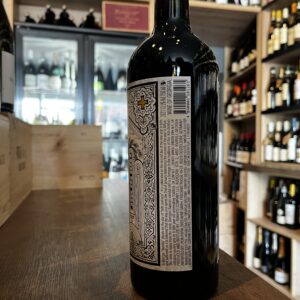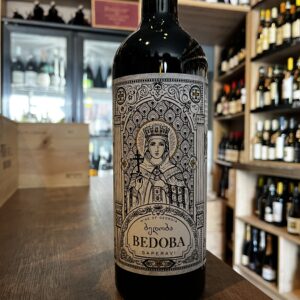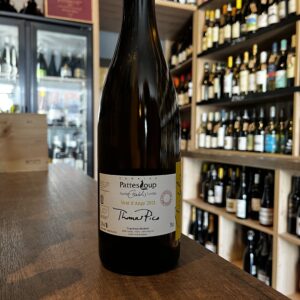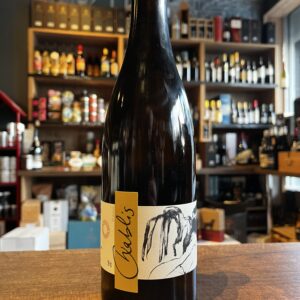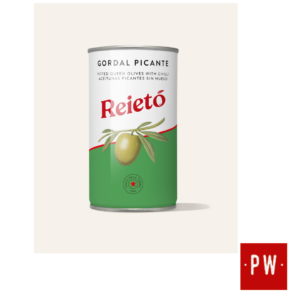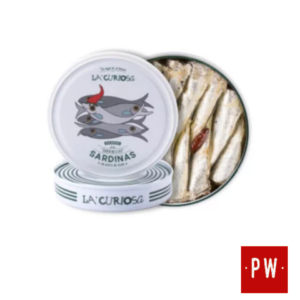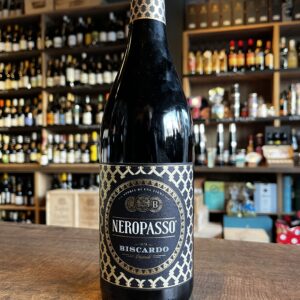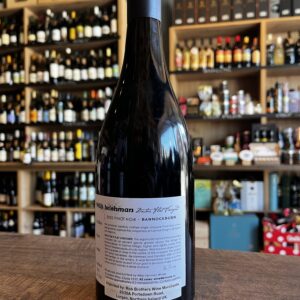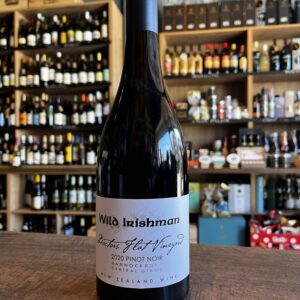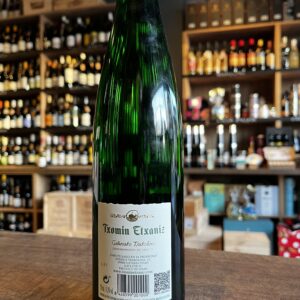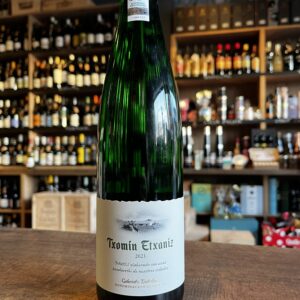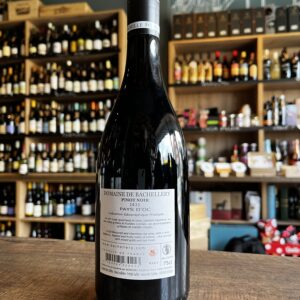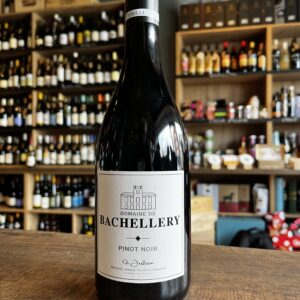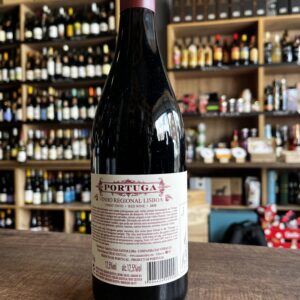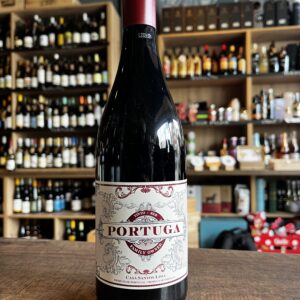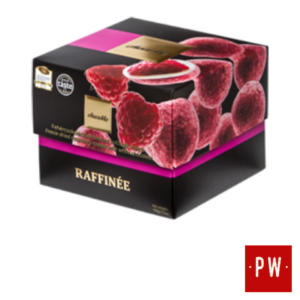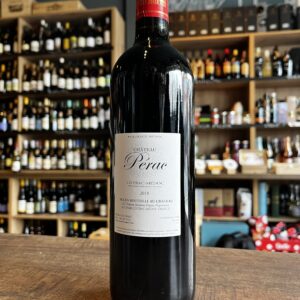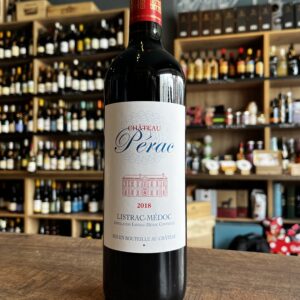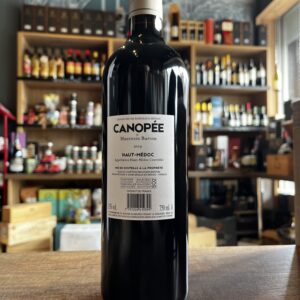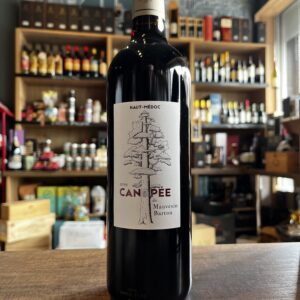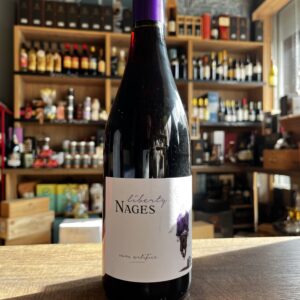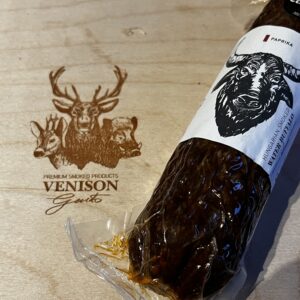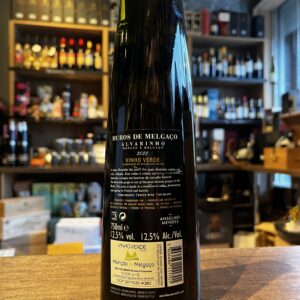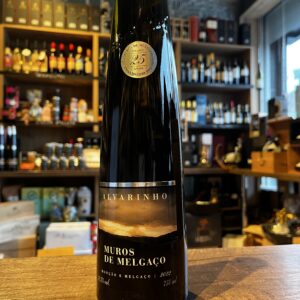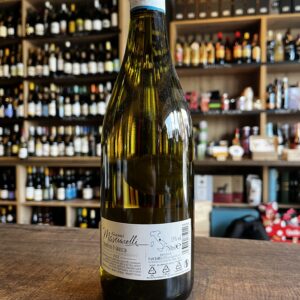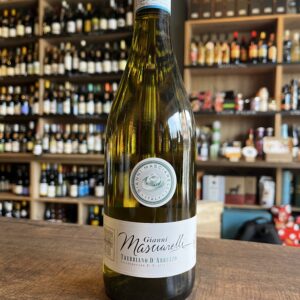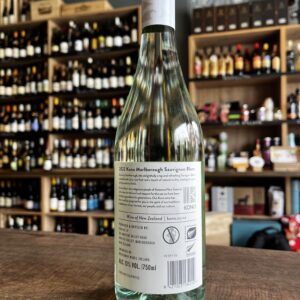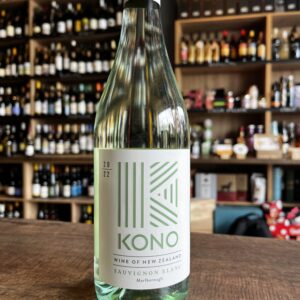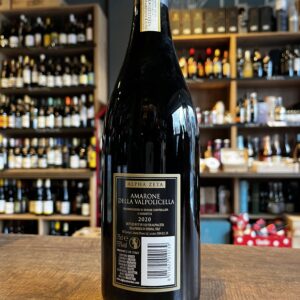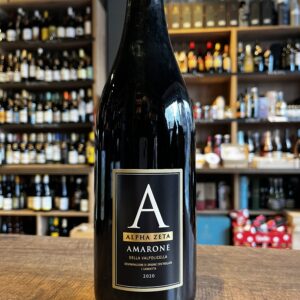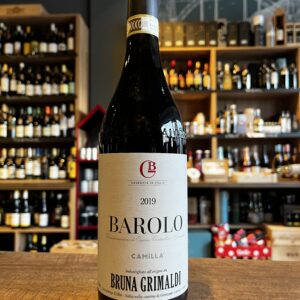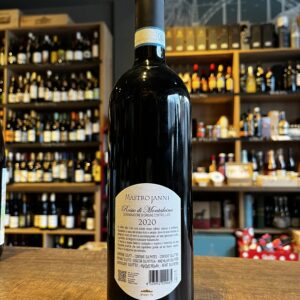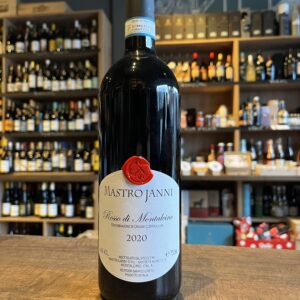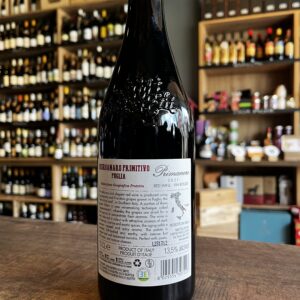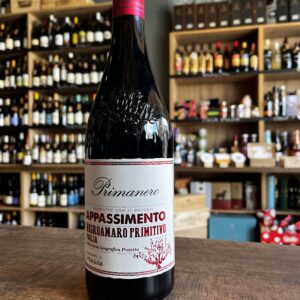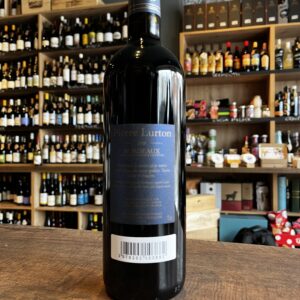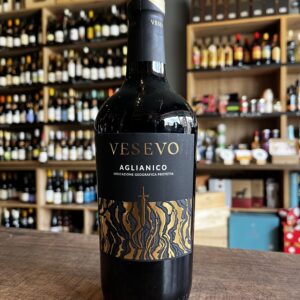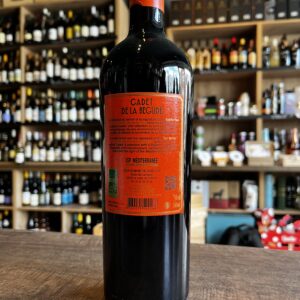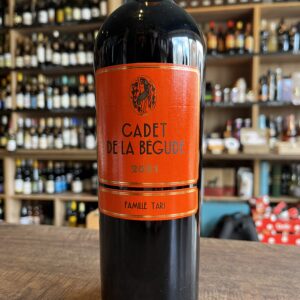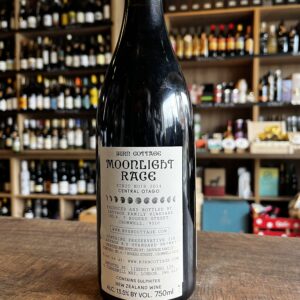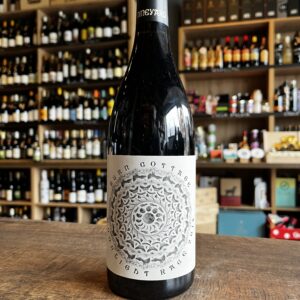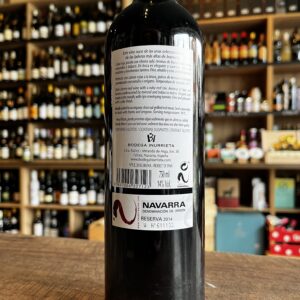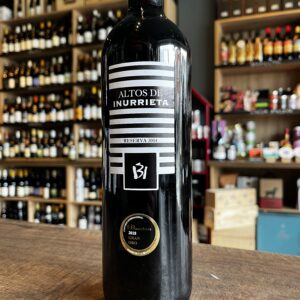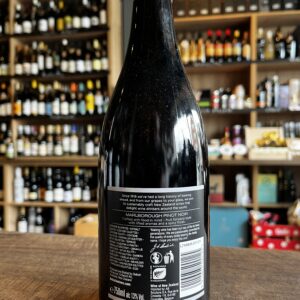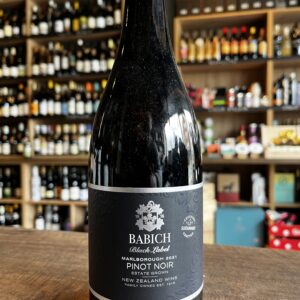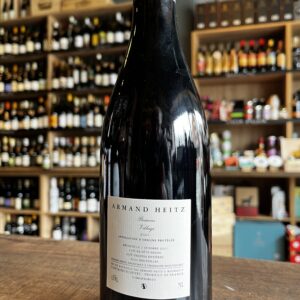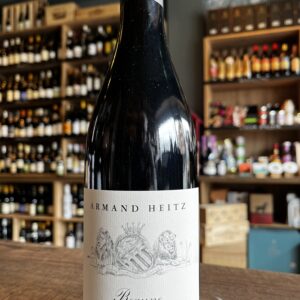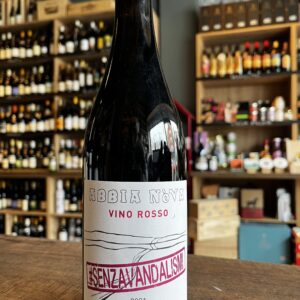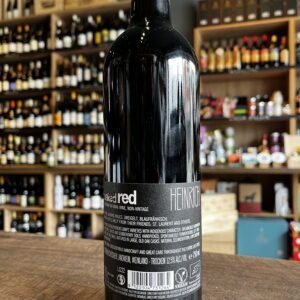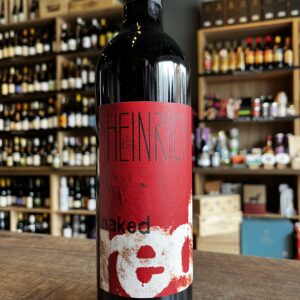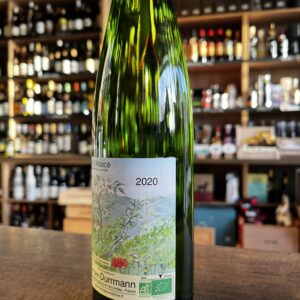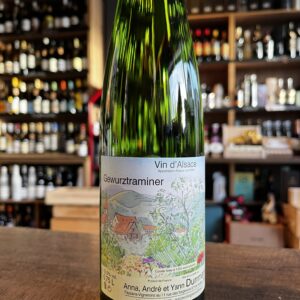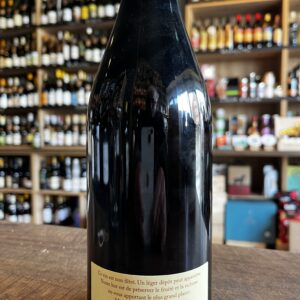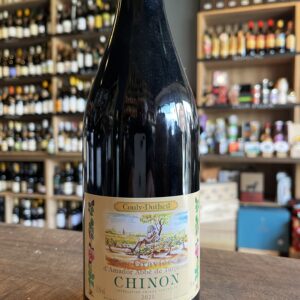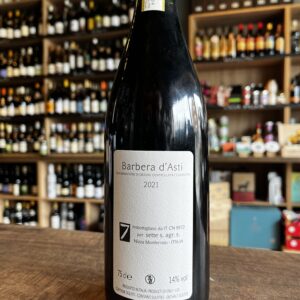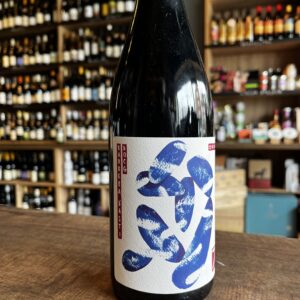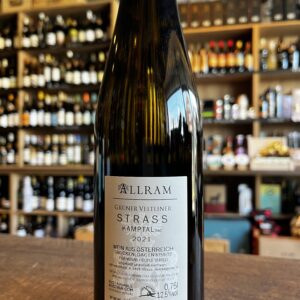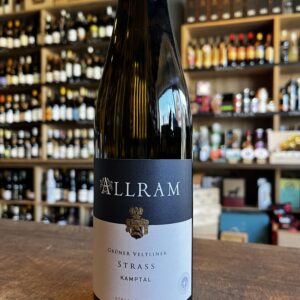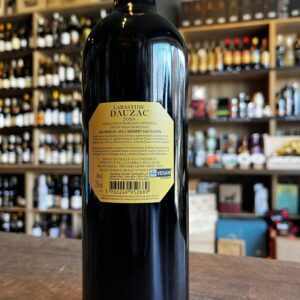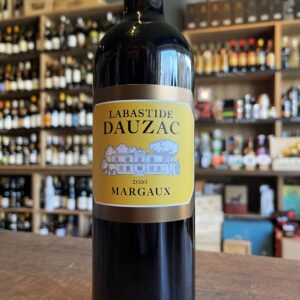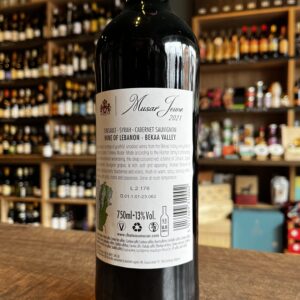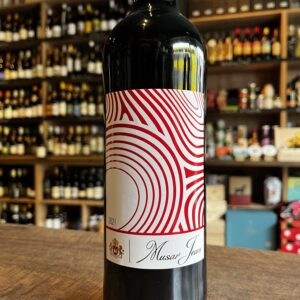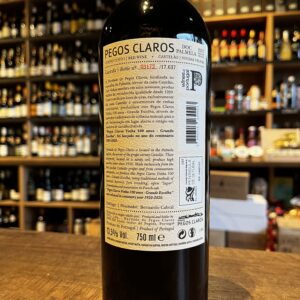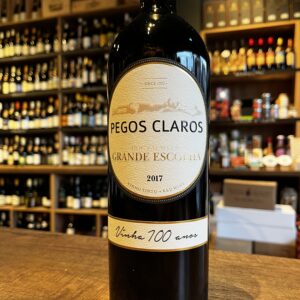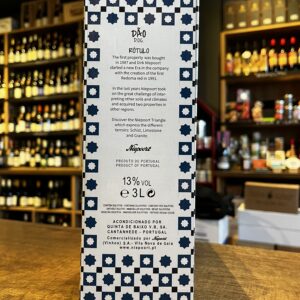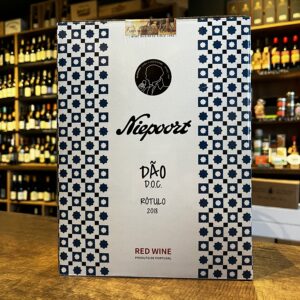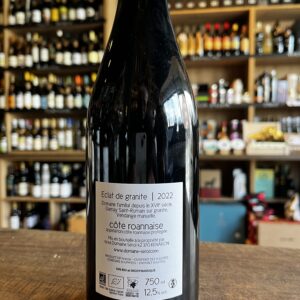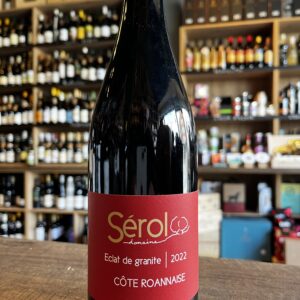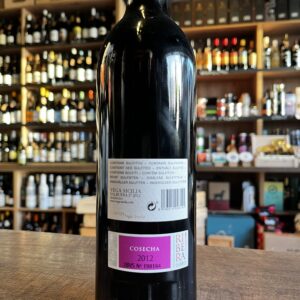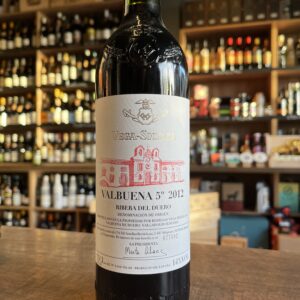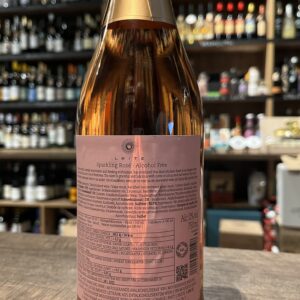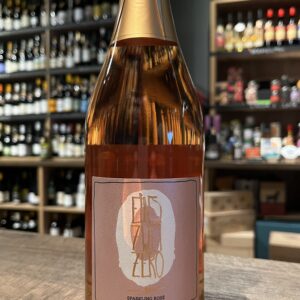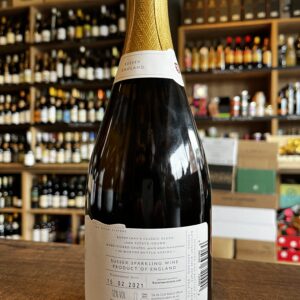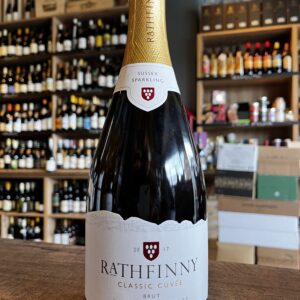-
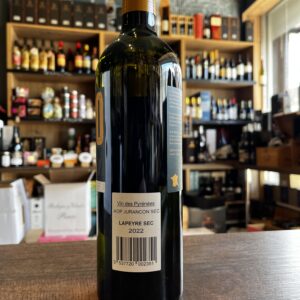
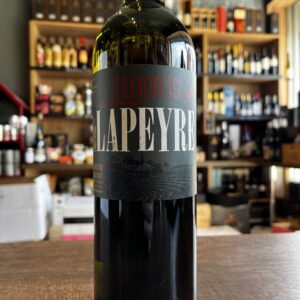 The Clos Lapeyere Estate is a family-owned estate that dealt with rearing livestock, cultivating vines and farming many years ago. It was in 1985 that the head of the family, Jean-Bernard Larrieu decided to exclusively focus on cultivating vines and making classic wines that spoke volumes about the richness of the Chapelle de Rousse appellation.
The Clos Lapeyere Estate is a family-owned estate that dealt with rearing livestock, cultivating vines and farming many years ago. It was in 1985 that the head of the family, Jean-Bernard Larrieu decided to exclusively focus on cultivating vines and making classic wines that spoke volumes about the richness of the Chapelle de Rousse appellation. -
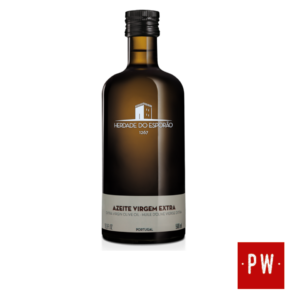 A smooth, harmonious olive oil with a good balance of those fruity aromas typical of the Alentejo. Excellent for cooking and frying in a wide variety of recipes including soups, baking and roasting.
A smooth, harmonious olive oil with a good balance of those fruity aromas typical of the Alentejo. Excellent for cooking and frying in a wide variety of recipes including soups, baking and roasting.Technical sheet
-
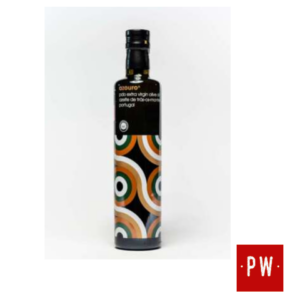 A premium quality oil created from a unique blend of the finest indigenous olive varieties – Verdeal, Madural & Cobrançosa.It has a balanced & harmonious flavour, with a fresh green fruity aroma and a precious golden green colour. There is a sweetness to the taste with notes of almonds, a medium peppery bite & an elegant lasting finish.
A premium quality oil created from a unique blend of the finest indigenous olive varieties – Verdeal, Madural & Cobrançosa.It has a balanced & harmonious flavour, with a fresh green fruity aroma and a precious golden green colour. There is a sweetness to the taste with notes of almonds, a medium peppery bite & an elegant lasting finish. -
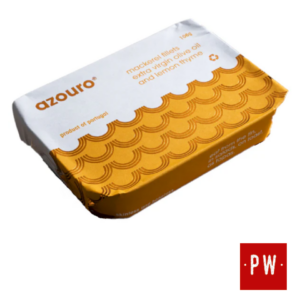 Azouro Mackerel fillets in organic extra virgin olive oil and lemon thyme. 100% pure and premium quality mackerel fillets in organic extra virgin olive oil and lemon thyme. Skinless and boneless. Ready to eat.Eat from the tin, in salads, on toast, as tapas. The freshest fish with the purest olive oil and a hint of lemon thyme (herb) combine to make an incredible taste and flavour sensation.A more interesting way to enjoy tinned fish!Rich in Omega-3 and an excellent source of protein.Canned and packaged by hand in Matosinhos (fishing port), Northern Portugal, combining traditional Portuguese methods with modern technologies and the highest quality standards.
Azouro Mackerel fillets in organic extra virgin olive oil and lemon thyme. 100% pure and premium quality mackerel fillets in organic extra virgin olive oil and lemon thyme. Skinless and boneless. Ready to eat.Eat from the tin, in salads, on toast, as tapas. The freshest fish with the purest olive oil and a hint of lemon thyme (herb) combine to make an incredible taste and flavour sensation.A more interesting way to enjoy tinned fish!Rich in Omega-3 and an excellent source of protein.Canned and packaged by hand in Matosinhos (fishing port), Northern Portugal, combining traditional Portuguese methods with modern technologies and the highest quality standards. -
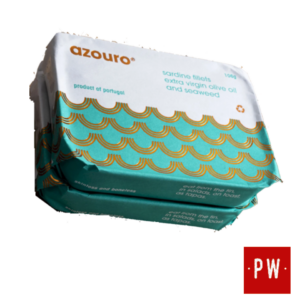 Award-winning sardines in extra virgin olive oil,on a bed of organic seaweed (Sea Lettuce & Bladderwrack). Combine to make an incredibly delicate taste, and umami flavour sensation. Our fish are rich in Omega-3 and an excellent source of protein. Prepared, canned, and packaged by hand in Matosinhos (fishing port), Northern Portugal, combining traditional Portuguese methods with modern technologies and the highest quality standards. Our fish is skinless, boneless, and ready to eat from the tin, in salads, on toast, or as tapas.
Award-winning sardines in extra virgin olive oil,on a bed of organic seaweed (Sea Lettuce & Bladderwrack). Combine to make an incredibly delicate taste, and umami flavour sensation. Our fish are rich in Omega-3 and an excellent source of protein. Prepared, canned, and packaged by hand in Matosinhos (fishing port), Northern Portugal, combining traditional Portuguese methods with modern technologies and the highest quality standards. Our fish is skinless, boneless, and ready to eat from the tin, in salads, on toast, or as tapas. -
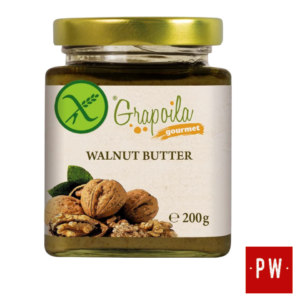 Grapoila uses Zero Waste production meaning, that all created by-products are used for further purposes, nothing goes to waste. Gourmet seed butters are created after settling and filtering the cold-pressed oils, without the use of any additives, preservatives, colouring agents. Due to the gentle process of cold-pressing they fully preserve the valuable ingredients of the high-quality seeds. Its cold-pressed oil content is high and it also contains the fine microparts of the seeds. Almond butter is rich in unsaturated fatty acids, Vitamin E and other antioxidant ingredients. It is a good source of fibre and minerals like potassium, magnesium, calcium, as well as in cholin, that support certain functions of the nervous system. Almond butter is a versatile gourmet food with the natural taste of the raw almonds. It can be used for making creams, fillings, sauces, pastry doughs, or simply adding to shakes and smoothies.
Grapoila uses Zero Waste production meaning, that all created by-products are used for further purposes, nothing goes to waste. Gourmet seed butters are created after settling and filtering the cold-pressed oils, without the use of any additives, preservatives, colouring agents. Due to the gentle process of cold-pressing they fully preserve the valuable ingredients of the high-quality seeds. Its cold-pressed oil content is high and it also contains the fine microparts of the seeds. Almond butter is rich in unsaturated fatty acids, Vitamin E and other antioxidant ingredients. It is a good source of fibre and minerals like potassium, magnesium, calcium, as well as in cholin, that support certain functions of the nervous system. Almond butter is a versatile gourmet food with the natural taste of the raw almonds. It can be used for making creams, fillings, sauces, pastry doughs, or simply adding to shakes and smoothies. -
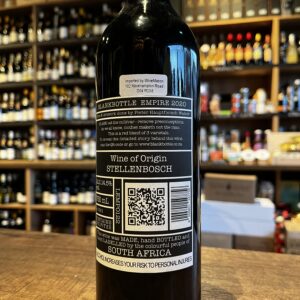
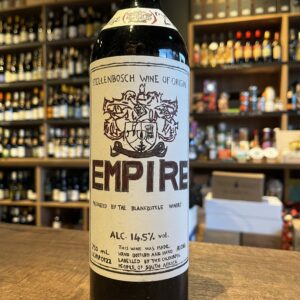 The story of this wine told by Peter Hauptfleisch himself-''Today I'm standing up to defend the EMPIRE - STELLENBOSCH. Silently, she’s been re-aligning her troops and now strikes back at the Swartland to establish herself yet again as a formidable force. Just for the record - I am a huge fan of Swartland white blends. The image of South African wines has changed dramatically over the past 10 years and the Swartland played a huge part in this. Their wines, especially the Rhône-style white blends are top notch. They are fun, young, energetic and unique and started to gain international fame. Stellenbosch, however (where I studied winemaking), is the original EMPIRE of South African wine. Like most of us, I like to support the underdog, and in the case of white blends, the Empire became exactly that. So I created a white blend based on similar varieties - a combination that could give some of the Swartland white blends a go. The empire is therefore now striking back at the Swartland with a blend of an all-Stellenbosch Verdelho, Pinot blanc, Sauvignon blanc, Roussanne, Marsanne, Chardonnay, Chenin blanc and Viognier. The label consists of two sections. On the left part of the label you will see a half star, which was the logo for the "Swartland Revolution". And on the right - stripes that represent a traditional and conservative EMPIRE. And the red brother of Empire Strikes Back is EMPIRE - not striking back but just being himself. With Cabernet Sauvignon as driver and bits of Merlot and Cabernet franc to compliment. The old style design label shows a combination crest. I combined the crest of Stellenbosch University and Elsenburg College - The 2 Empires when it comes to wine education - I studied at both...'' In another words this red was created to strike back at the popularity of the whites and with its quality to balance the market. I dont it was needed as the reds quality is a great as the counterparts.
The story of this wine told by Peter Hauptfleisch himself-''Today I'm standing up to defend the EMPIRE - STELLENBOSCH. Silently, she’s been re-aligning her troops and now strikes back at the Swartland to establish herself yet again as a formidable force. Just for the record - I am a huge fan of Swartland white blends. The image of South African wines has changed dramatically over the past 10 years and the Swartland played a huge part in this. Their wines, especially the Rhône-style white blends are top notch. They are fun, young, energetic and unique and started to gain international fame. Stellenbosch, however (where I studied winemaking), is the original EMPIRE of South African wine. Like most of us, I like to support the underdog, and in the case of white blends, the Empire became exactly that. So I created a white blend based on similar varieties - a combination that could give some of the Swartland white blends a go. The empire is therefore now striking back at the Swartland with a blend of an all-Stellenbosch Verdelho, Pinot blanc, Sauvignon blanc, Roussanne, Marsanne, Chardonnay, Chenin blanc and Viognier. The label consists of two sections. On the left part of the label you will see a half star, which was the logo for the "Swartland Revolution". And on the right - stripes that represent a traditional and conservative EMPIRE. And the red brother of Empire Strikes Back is EMPIRE - not striking back but just being himself. With Cabernet Sauvignon as driver and bits of Merlot and Cabernet franc to compliment. The old style design label shows a combination crest. I combined the crest of Stellenbosch University and Elsenburg College - The 2 Empires when it comes to wine education - I studied at both...'' In another words this red was created to strike back at the popularity of the whites and with its quality to balance the market. I dont it was needed as the reds quality is a great as the counterparts. -
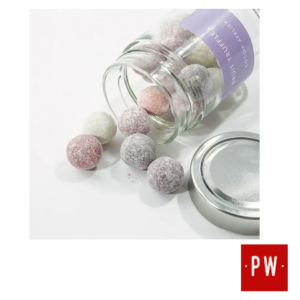 Introducing Cocoa Atelier Fruit Truffles, an exquisite confection that combines the lusciousness of Pate de Fruit centers with an almond and chocolate coating, delicately dusted with confectioner’s sugar. First and foremost, the journey begins with the carefully crafted Pate de Fruit centers. Made from real fruit puree, these delectable centers burst with the natural sweetness and essence of the finest fruits. Each bite offers a delightful explosion of fruity goodness that awakens your taste buds and leaves a lasting impression.
Introducing Cocoa Atelier Fruit Truffles, an exquisite confection that combines the lusciousness of Pate de Fruit centers with an almond and chocolate coating, delicately dusted with confectioner’s sugar. First and foremost, the journey begins with the carefully crafted Pate de Fruit centers. Made from real fruit puree, these delectable centers burst with the natural sweetness and essence of the finest fruits. Each bite offers a delightful explosion of fruity goodness that awakens your taste buds and leaves a lasting impression. -
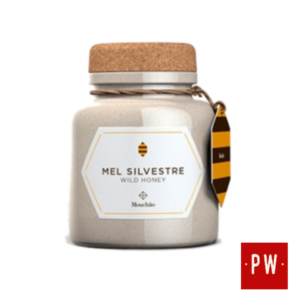 Although beehives have existed in Mouchão for over a century, honey was first commercially sold in 2011. In the expansive and natural surroundings of the estate, bees craft this wild honey with pollen from native shrubs, trees, and wild meadows. Beekeeping intervention is limited almost exclusively to harvesting. The honey, due to its purity, tends to thicken over time and can vary both in consistency and in its darker golden hue. Usually with a thick but smooth texture, it has floral highlights of orange blossom, wild lavender, and jasmine, with undertones of biscuit, butter, and dried fruits. As this is a raw honey, over the months it tends to thicken and can vary both in consistency and in darker golden hues.
Although beehives have existed in Mouchão for over a century, honey was first commercially sold in 2011. In the expansive and natural surroundings of the estate, bees craft this wild honey with pollen from native shrubs, trees, and wild meadows. Beekeeping intervention is limited almost exclusively to harvesting. The honey, due to its purity, tends to thicken over time and can vary both in consistency and in its darker golden hue. Usually with a thick but smooth texture, it has floral highlights of orange blossom, wild lavender, and jasmine, with undertones of biscuit, butter, and dried fruits. As this is a raw honey, over the months it tends to thicken and can vary both in consistency and in darker golden hues. -
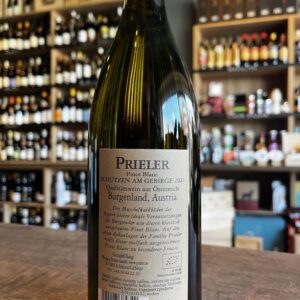
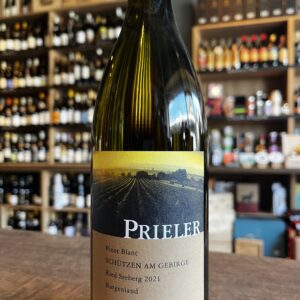 Old vines are the fortune of every vintner. They root deeply and lend their intrinsic potential a persistent voice. Pinot Blanc, also locally called Weissburgunder, has a long tradition in our region. My grandfather planted most of our vines in the limestone of the Seeberg site 60 years ago. A few were even planted by my grandfather over 90 years ago. It is my duty today to continue to tell the story that the two of them began.
Old vines are the fortune of every vintner. They root deeply and lend their intrinsic potential a persistent voice. Pinot Blanc, also locally called Weissburgunder, has a long tradition in our region. My grandfather planted most of our vines in the limestone of the Seeberg site 60 years ago. A few were even planted by my grandfather over 90 years ago. It is my duty today to continue to tell the story that the two of them began. -
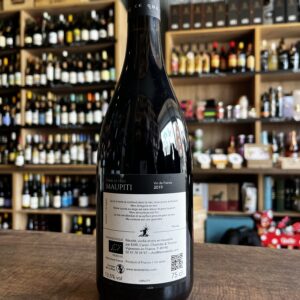
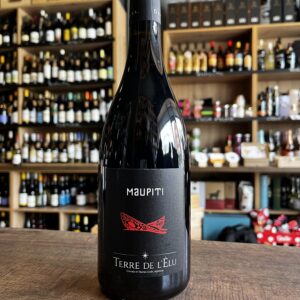 In January 2008, Charlotte and Thomas embarked on a marvelous winemaking adventure with the acquisition of the Clos de l’Élu domain, on the schist-rich lands of the Anjou Noir. With many years’ experience as a wine consultant (Thomas), in the fields of communication and management (Charlotte), they are both deeply passionate about the life of this domain which lies on the finest terroirs of the Layon valley. The 20 hectares are farmed organically and the domain offers a structured range of different wines. If it was the Chenin that attracted Thomas to Anjou, the red grape varieties (Cabernet Franc, Grolleau, Pineau d’Aunis, gamay) continue to inspire him with deep, rich vintages that are expressive and full of finesse. The team is driven by strong convictions, from the work in the vineyard to the cellar, in order to produce wines that truly reflect the terroir. In the vineyards: the whole domain was converted to organic farming in April 2010 (first certified organic vintage in 2013), severe disbudding, appropriate pruning modes depending on the grape variety and plot, soil work, manual harvest in 20 kg boxes, draconian sorting while harvesting. In the cellar: use of gravity as much as possible, natural fermentations, winemaking choice favoring the least manipulation of the grapes possible, winemaking of the reds in whole bunches, maceration and aging in tanks, weathered (or aged) barrels or clay amphorae.
In January 2008, Charlotte and Thomas embarked on a marvelous winemaking adventure with the acquisition of the Clos de l’Élu domain, on the schist-rich lands of the Anjou Noir. With many years’ experience as a wine consultant (Thomas), in the fields of communication and management (Charlotte), they are both deeply passionate about the life of this domain which lies on the finest terroirs of the Layon valley. The 20 hectares are farmed organically and the domain offers a structured range of different wines. If it was the Chenin that attracted Thomas to Anjou, the red grape varieties (Cabernet Franc, Grolleau, Pineau d’Aunis, gamay) continue to inspire him with deep, rich vintages that are expressive and full of finesse. The team is driven by strong convictions, from the work in the vineyard to the cellar, in order to produce wines that truly reflect the terroir. In the vineyards: the whole domain was converted to organic farming in April 2010 (first certified organic vintage in 2013), severe disbudding, appropriate pruning modes depending on the grape variety and plot, soil work, manual harvest in 20 kg boxes, draconian sorting while harvesting. In the cellar: use of gravity as much as possible, natural fermentations, winemaking choice favoring the least manipulation of the grapes possible, winemaking of the reds in whole bunches, maceration and aging in tanks, weathered (or aged) barrels or clay amphorae.Technical Sheet
-
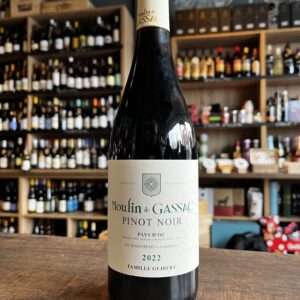 One of the wine films that has had the greatest impact on the industry is undoubtedly Jonathan Nossiter's “Mondovino”. This film was presented at the Cannes Film Festival in 2004, and essentially reflects the conflict between those who understand wine production as a basic artisan work that is completely connected to the land, and those who see it as a corporate business. One of the interviewees featured in the documentary is Aimé Guibert. Creator and champion of the renowned Mas Daumas Gassac, it is thanks to his obsession of giving absolute prominence to the vineyard that he manages to extol the quality of the wines of Languedoc, a region historically known for producing low quality table wines. So when Robert Mondavi, a wine magnate, became interested in this still under used region, Aimé fought with all his might until Mondavi withdrew from his venture. Now, it is his children who continue to protect this legacy with the same passion. A legacy based not so much on the category of the wine as on its quality. Although these wines only carry the vin de pays de l'Oc label, they are considered by great wine specialists to be the “Lafite Rothschilds” of Languedoc-Roussillon.
One of the wine films that has had the greatest impact on the industry is undoubtedly Jonathan Nossiter's “Mondovino”. This film was presented at the Cannes Film Festival in 2004, and essentially reflects the conflict between those who understand wine production as a basic artisan work that is completely connected to the land, and those who see it as a corporate business. One of the interviewees featured in the documentary is Aimé Guibert. Creator and champion of the renowned Mas Daumas Gassac, it is thanks to his obsession of giving absolute prominence to the vineyard that he manages to extol the quality of the wines of Languedoc, a region historically known for producing low quality table wines. So when Robert Mondavi, a wine magnate, became interested in this still under used region, Aimé fought with all his might until Mondavi withdrew from his venture. Now, it is his children who continue to protect this legacy with the same passion. A legacy based not so much on the category of the wine as on its quality. Although these wines only carry the vin de pays de l'Oc label, they are considered by great wine specialists to be the “Lafite Rothschilds” of Languedoc-Roussillon. -
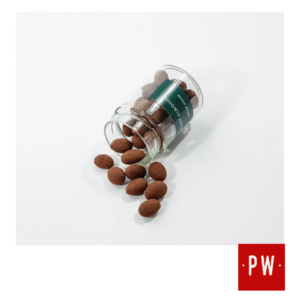 Cocoa Atelier Velvet Almonds are not just confections; they are an embodiment of craftsmanship, an homage to the finest ingredients, and a celebration of taste. Whether you indulge in them as an elegant accompaniment to a fine cup of coffee, as a luxurious addition to a dessert platter, or simply as a treat to savour in moments of quiet indulgence, these almonds will redefine your perception of chocolate-covered nuts.
Cocoa Atelier Velvet Almonds are not just confections; they are an embodiment of craftsmanship, an homage to the finest ingredients, and a celebration of taste. Whether you indulge in them as an elegant accompaniment to a fine cup of coffee, as a luxurious addition to a dessert platter, or simply as a treat to savour in moments of quiet indulgence, these almonds will redefine your perception of chocolate-covered nuts. -
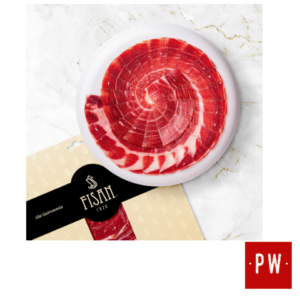 One of FISAN’s most prized products in a practical format to delight your palate with the most extraordinary nuances of 100% Iberico Bellota Ham Alta Gastronomia at any time and place. Its secret: the selection from the earliest stage of the best pure Iberico breed pigs, patience and curing in our natural cellars in Guijuelo, which leads to the best Pata Negra Ham you will ever remember. Only the most exceptional pieces qualify as Alta Gastronomia.
One of FISAN’s most prized products in a practical format to delight your palate with the most extraordinary nuances of 100% Iberico Bellota Ham Alta Gastronomia at any time and place. Its secret: the selection from the earliest stage of the best pure Iberico breed pigs, patience and curing in our natural cellars in Guijuelo, which leads to the best Pata Negra Ham you will ever remember. Only the most exceptional pieces qualify as Alta Gastronomia. -
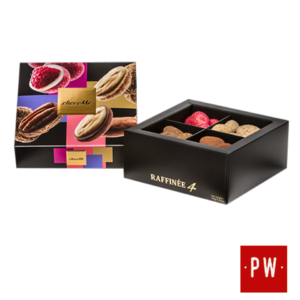 All the best Raffinée can offer in one exclusive selection - that's what Raffinée 4 is all about. We put together this diverse assortment of four of our most characteristic, multiple award-winning creations, reviewed by professional jury teams, for your enjoyment. Almonds from Avola coated with milk chocolate and tonka beans Freeze-dried raspberry coated with white chocolate Sicilian almonds coated with Guérande salty blonde chocolate and crispy wafer Pecans covered in milk chocolate mixed with caramel and salted vanilla powder from Tahiti
All the best Raffinée can offer in one exclusive selection - that's what Raffinée 4 is all about. We put together this diverse assortment of four of our most characteristic, multiple award-winning creations, reviewed by professional jury teams, for your enjoyment. Almonds from Avola coated with milk chocolate and tonka beans Freeze-dried raspberry coated with white chocolate Sicilian almonds coated with Guérande salty blonde chocolate and crispy wafer Pecans covered in milk chocolate mixed with caramel and salted vanilla powder from Tahiti -
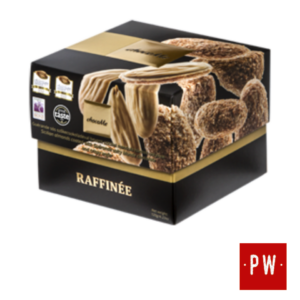 The thin, long almonds from Sicily are creamy and free of any sourness in aftertaste. We mix them with crispy wafer and give them a blonde chocolate bath, through which they acquire the elementary characteristic caramel notes thanks to the Guérande salt. We roll the almonds with a thin layer of wafer, to make them even more crispy.
The thin, long almonds from Sicily are creamy and free of any sourness in aftertaste. We mix them with crispy wafer and give them a blonde chocolate bath, through which they acquire the elementary characteristic caramel notes thanks to the Guérande salt. We roll the almonds with a thin layer of wafer, to make them even more crispy. -
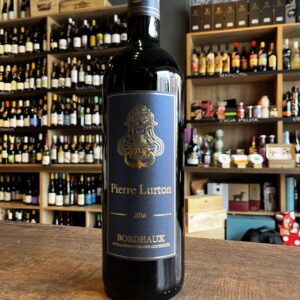 Bordeaux Pierre Lurton is a wine produced by Pierre Lurton in his namesake wine cellars. He draws directly from his knowledge acquired in the most prestigious properties of Bordeaux. Thus, this wine is rigorously selected by Pierre Lurton.The colour of the label also reflects the classic colour of the mansions of Gironde´s capital.
Bordeaux Pierre Lurton is a wine produced by Pierre Lurton in his namesake wine cellars. He draws directly from his knowledge acquired in the most prestigious properties of Bordeaux. Thus, this wine is rigorously selected by Pierre Lurton.The colour of the label also reflects the classic colour of the mansions of Gironde´s capital. -
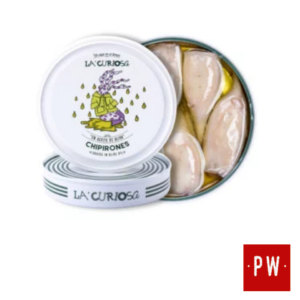 Squid have a delicate flavour and firm texture, which is achieved through rigorous selection control. Subsequently, it is washed, cooked and meticulously packed by their "canners".The se cephalopods are presented stuffed with their own legs and bathed in the best olive oil, resulting in an exquisite product.
Squid have a delicate flavour and firm texture, which is achieved through rigorous selection control. Subsequently, it is washed, cooked and meticulously packed by their "canners".The se cephalopods are presented stuffed with their own legs and bathed in the best olive oil, resulting in an exquisite product. -
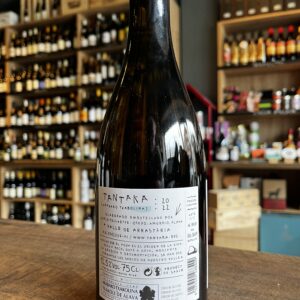
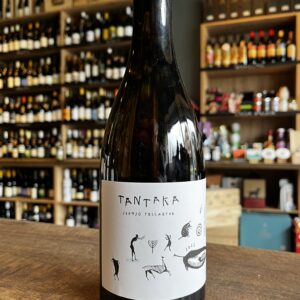 Tantaka is a white wine aged on lees made with the Hondarribi Zuri variety in the D.O. Arabako-txakolina (Basque Country) by Juanjo Tellaetxe. Juanjo Tellaetxe which happens to be a priest and a shepherd made his dream a reality when he implemented his work philosophy in the Arrastaria Valley vineyards (Álava) to make honest wines with a strong local character. To do that, the Tantaka winery is committed to using native varieties, cultivated in an environmentally-respectful way and with minimum intervention in the winery. The soils are characterised by their alluvial and semi-deep character, with a climate that ranges from Atlantic to continental, depending on the vintage Pair it with seafood, baked fish, vegetables and pork.
Tantaka is a white wine aged on lees made with the Hondarribi Zuri variety in the D.O. Arabako-txakolina (Basque Country) by Juanjo Tellaetxe. Juanjo Tellaetxe which happens to be a priest and a shepherd made his dream a reality when he implemented his work philosophy in the Arrastaria Valley vineyards (Álava) to make honest wines with a strong local character. To do that, the Tantaka winery is committed to using native varieties, cultivated in an environmentally-respectful way and with minimum intervention in the winery. The soils are characterised by their alluvial and semi-deep character, with a climate that ranges from Atlantic to continental, depending on the vintage Pair it with seafood, baked fish, vegetables and pork. -
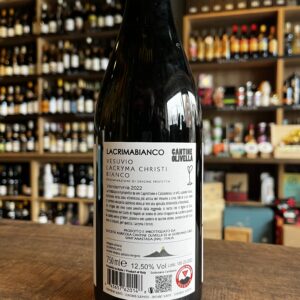
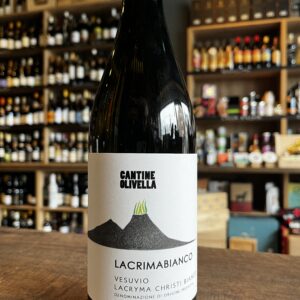 The native roots of the rare and unique grapes found in this ancient yet active volcano and the passion of local talent Andrea Cozzolino that was eager to breathe new life into one of Campania’s most historic wine regions would make Dionysus, god of the wine proud. Here on the slopes of Monte Summa Close to the ''Olivella'' Spring (where the winery takes its name), is the oldest part of Vesuvio (the volcano that destroyed Pompeii and continues to rumble, shaking the nerves of the Napolitani) grape growing is an ancient art, the lava-rich, sandy slopes of the volcano providing perfect terroir for native grapes such as Catalanesca and Piedirosso. In 1974, an ancient fragment of an earthenware wine jug was discovered. This is proof of the wealth of an area whose wines were some of the finest of ancient Rome on the market with Pompeii. An abbreviated inscription of “Sextus Catius Festus” is engraved on the opening of the earthenware jar along with a seal depicting a stylized leaf, similar to a heart. The seal tellingly became the logo for “Cantine Olivella”, and was modified into a wine glass. This is the perfect representation of the union between land, art and passion, namely three hearts beating in unison in the world of Cantine Olivella. Great served chilled as an appetiser or with fresh fish, shellfish; creamy fish soup or risotto
The native roots of the rare and unique grapes found in this ancient yet active volcano and the passion of local talent Andrea Cozzolino that was eager to breathe new life into one of Campania’s most historic wine regions would make Dionysus, god of the wine proud. Here on the slopes of Monte Summa Close to the ''Olivella'' Spring (where the winery takes its name), is the oldest part of Vesuvio (the volcano that destroyed Pompeii and continues to rumble, shaking the nerves of the Napolitani) grape growing is an ancient art, the lava-rich, sandy slopes of the volcano providing perfect terroir for native grapes such as Catalanesca and Piedirosso. In 1974, an ancient fragment of an earthenware wine jug was discovered. This is proof of the wealth of an area whose wines were some of the finest of ancient Rome on the market with Pompeii. An abbreviated inscription of “Sextus Catius Festus” is engraved on the opening of the earthenware jar along with a seal depicting a stylized leaf, similar to a heart. The seal tellingly became the logo for “Cantine Olivella”, and was modified into a wine glass. This is the perfect representation of the union between land, art and passion, namely three hearts beating in unison in the world of Cantine Olivella. Great served chilled as an appetiser or with fresh fish, shellfish; creamy fish soup or risotto -

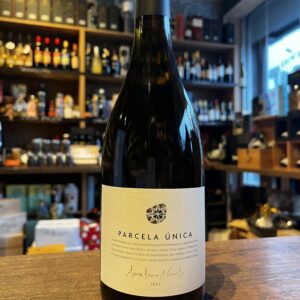 Born in Monção in Portugal’s Vinho Verde region, Anselmo Mendes fell in love with the Alvarinho grape at an early age and began making his first wines from the variety in 1988. Over the years he has consulted for many of Portugal’s top wineries and he also makes his own wines in Minho close to the border with Spain. Anselmo uses his decades of experience of working with Alvarinho to create a range of styles from crisp, light-bodied expressions to richer wines which are fermented and aged in oak barrels. A very versatile wine, it can be paired with stronger meat dishes or more complex fish, as well as shellfish and crustaceans. In the company of almond crusted cod on a bed of mashed potatoes or lamb chops with rosemary, Parcela Única wine in perfect harmony enhances fantastic flavors. Should be served between 11-13ºC. Technical sheet
Born in Monção in Portugal’s Vinho Verde region, Anselmo Mendes fell in love with the Alvarinho grape at an early age and began making his first wines from the variety in 1988. Over the years he has consulted for many of Portugal’s top wineries and he also makes his own wines in Minho close to the border with Spain. Anselmo uses his decades of experience of working with Alvarinho to create a range of styles from crisp, light-bodied expressions to richer wines which are fermented and aged in oak barrels. A very versatile wine, it can be paired with stronger meat dishes or more complex fish, as well as shellfish and crustaceans. In the company of almond crusted cod on a bed of mashed potatoes or lamb chops with rosemary, Parcela Única wine in perfect harmony enhances fantastic flavors. Should be served between 11-13ºC. Technical sheet -
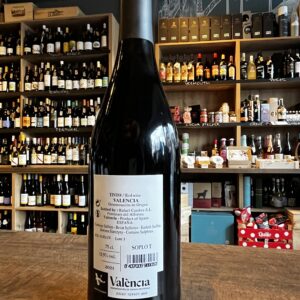
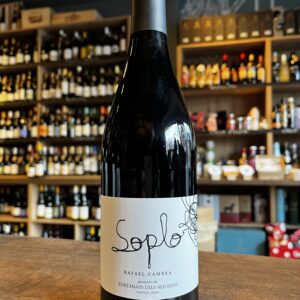 Rafael Cambra has spent most of his life in a vineyard. His family own one of the most prestigious nurseries in Spain, with clients like Vega Sicilia, Alvaro Palacios and many more. He established his own cellar in 2001 after finding a vineyard with 50-year-old Monastrell vines. He also planted some Cabernet Sauvignon and Cabernet Franc. The vineyards lie in the lowest part of the Sierra, inland from Valencia, with olive and almond trees surrounding them. Rafael believes in minimal intervention when it comes to wine-making, creating elegant yet restrained wines. He is an innovative wine-maker, constantly experimenting with different grapes and blends until completely satisfied with the result. Charcuterie, Red meat, White meat, Poultry, Mushroom, Barbecue, Exotic cuisine, Cheese.
Rafael Cambra has spent most of his life in a vineyard. His family own one of the most prestigious nurseries in Spain, with clients like Vega Sicilia, Alvaro Palacios and many more. He established his own cellar in 2001 after finding a vineyard with 50-year-old Monastrell vines. He also planted some Cabernet Sauvignon and Cabernet Franc. The vineyards lie in the lowest part of the Sierra, inland from Valencia, with olive and almond trees surrounding them. Rafael believes in minimal intervention when it comes to wine-making, creating elegant yet restrained wines. He is an innovative wine-maker, constantly experimenting with different grapes and blends until completely satisfied with the result. Charcuterie, Red meat, White meat, Poultry, Mushroom, Barbecue, Exotic cuisine, Cheese. -
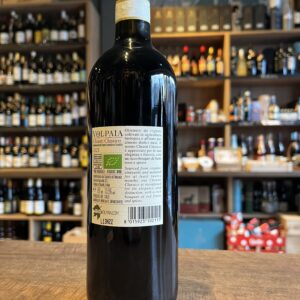
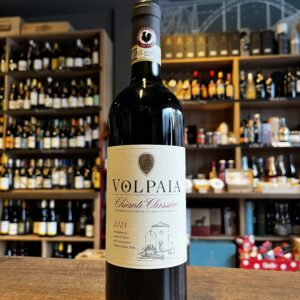 The oldest Italian Wine appellation. The first official document citing the Chianti wine is dated 1398. But it’s only in 1716 that the Granduke of Florence Cosimo III de’ Medici officialy sets the boundaries of the Chianti region where Chianti Classico wine is now produced (but not Chianti wine). Since 2007 Chianti Classico is made with up to 100% of Sangiovese and no more than 20% of other authorized red berry varieties of wich none should exceed 15% alone.
The oldest Italian Wine appellation. The first official document citing the Chianti wine is dated 1398. But it’s only in 1716 that the Granduke of Florence Cosimo III de’ Medici officialy sets the boundaries of the Chianti region where Chianti Classico wine is now produced (but not Chianti wine). Since 2007 Chianti Classico is made with up to 100% of Sangiovese and no more than 20% of other authorized red berry varieties of wich none should exceed 15% alone. -
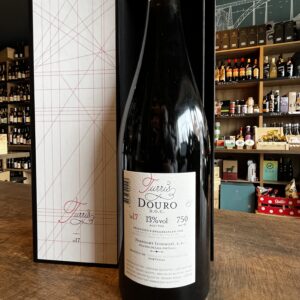
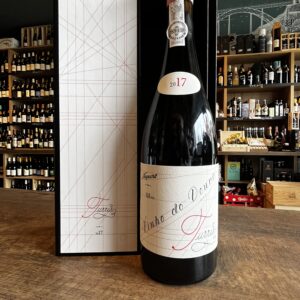 Turris is Niepoort's flagship red wine from the Cima Corgo region, more specifically from a very old South-facing vineyard whose vines are more than 130 years old , it is one of the oldest vineyards we know of in the region. This truly ancient, uncultivated vineyard lies hidden in the heart of the Douro Valley and is a true gift from our ancestors and refelcts every detail of nature and its area. These grapes from the Torre were always intended for one of Niepoort top wine Batuta and were a dream come true from Dirk Niepoort. The Turris was bottled quite early to preserve its freshness, minerality, youthful nature and the purity of its aromas and we expect it to show great aging potential. In addition to being a unique wine, each bottle is also unique because the labels were individually designed by the artist João Noutel.
Turris is Niepoort's flagship red wine from the Cima Corgo region, more specifically from a very old South-facing vineyard whose vines are more than 130 years old , it is one of the oldest vineyards we know of in the region. This truly ancient, uncultivated vineyard lies hidden in the heart of the Douro Valley and is a true gift from our ancestors and refelcts every detail of nature and its area. These grapes from the Torre were always intended for one of Niepoort top wine Batuta and were a dream come true from Dirk Niepoort. The Turris was bottled quite early to preserve its freshness, minerality, youthful nature and the purity of its aromas and we expect it to show great aging potential. In addition to being a unique wine, each bottle is also unique because the labels were individually designed by the artist João Noutel. -
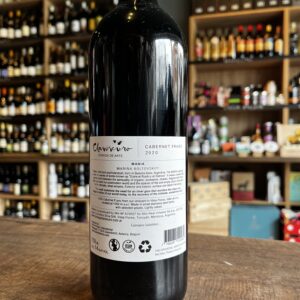
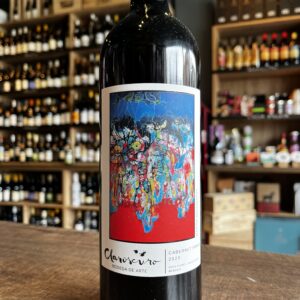 The grapes come from our single vineyard located in Vista Flores, Tunuyán, Uco Valley at 1054 m.a.s.l. (3428 ft). We have a sandy loam soil in the higher levels of the vineyard and stones in the lower parts so we can divide the vineyard into parcels thus generating greater diversity. This allows us to produce a greater variety of wines from the same vineyard. The drip irrigation system in our vineyard sources from the snowmelting of the high peaks
The grapes come from our single vineyard located in Vista Flores, Tunuyán, Uco Valley at 1054 m.a.s.l. (3428 ft). We have a sandy loam soil in the higher levels of the vineyard and stones in the lower parts so we can divide the vineyard into parcels thus generating greater diversity. This allows us to produce a greater variety of wines from the same vineyard. The drip irrigation system in our vineyard sources from the snowmelting of the high peaks -
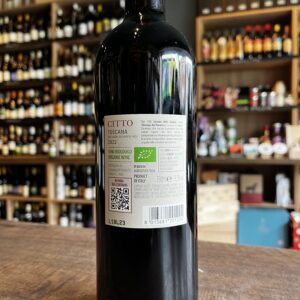
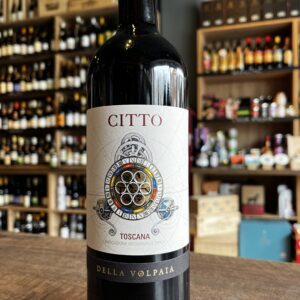 Castello di Volpaia overlooks the village of Radda in Chianti. The town was built in the 11th century as a fortified village on the border of Florence and Sienna. Although only part of the original protective walls and two of its six towers are still standing, the medieval layout and buildings within the village are still intact, making Volpaia one of the best preserved villages of its period. Just as it has been for the last 900 years, the entire village is intimately involved in the production of wine and olive oil. The cellars, bottling plant, barrels and olive press are nestled within the original stone walls that have been carefully restored by owners Carlo Mascheroni and Giovanella Stianti Mascheroni and their children, Nicolo and Federica. The nearly 114 acres of vineyards owned by Castello di Volpaia are at 1,300-2,130 feet above sea level, making Volpaia the highest winery in the Chianti region. The land is comprised of soils consisting largely of sandstone and a sedimentary rock from the Pliocene era. Citto is made from a selection of the best grapes from our IGT vineyards in the Chianti Classico and Maremma areas In the Tuscan dialect Citto means young boy. As from the land in comes from Citto is the young boy of Volpaia.As in the French tradition of the great Bordeaux Chateaux Chateau Mouton Rotschild has Mouton Cadet and Chateau Cheval Blanc has Petit Cheval, the same way Castello di Volpaia has his Citto. Pair with red meats and charcuterie
Castello di Volpaia overlooks the village of Radda in Chianti. The town was built in the 11th century as a fortified village on the border of Florence and Sienna. Although only part of the original protective walls and two of its six towers are still standing, the medieval layout and buildings within the village are still intact, making Volpaia one of the best preserved villages of its period. Just as it has been for the last 900 years, the entire village is intimately involved in the production of wine and olive oil. The cellars, bottling plant, barrels and olive press are nestled within the original stone walls that have been carefully restored by owners Carlo Mascheroni and Giovanella Stianti Mascheroni and their children, Nicolo and Federica. The nearly 114 acres of vineyards owned by Castello di Volpaia are at 1,300-2,130 feet above sea level, making Volpaia the highest winery in the Chianti region. The land is comprised of soils consisting largely of sandstone and a sedimentary rock from the Pliocene era. Citto is made from a selection of the best grapes from our IGT vineyards in the Chianti Classico and Maremma areas In the Tuscan dialect Citto means young boy. As from the land in comes from Citto is the young boy of Volpaia.As in the French tradition of the great Bordeaux Chateaux Chateau Mouton Rotschild has Mouton Cadet and Chateau Cheval Blanc has Petit Cheval, the same way Castello di Volpaia has his Citto. Pair with red meats and charcuterie -
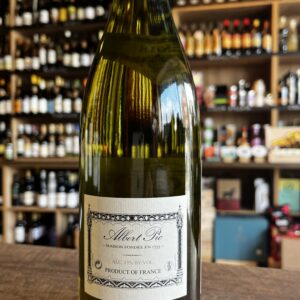
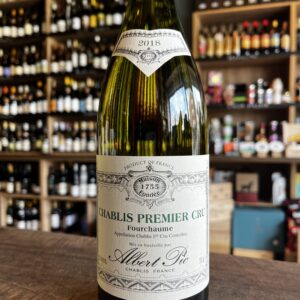 The maison Albert Pic et Fils was founded in 1755. The company is now owned by Baron Patrick de Ladoucette. Made from 100% Chardonnay grapes, this wine from Maison Albert Pic is a Chablis that comes from the central-eastern French region of Burgundy, on soils of Kimmeridgian origin with a low percentage of clay and marl. The vines are located in one of the seven Grand Crus with the appellation. Pair it white meats, blue cheeses but especially fish dishes. Serve at a temperature of 10-12°C in a wide goblet
The maison Albert Pic et Fils was founded in 1755. The company is now owned by Baron Patrick de Ladoucette. Made from 100% Chardonnay grapes, this wine from Maison Albert Pic is a Chablis that comes from the central-eastern French region of Burgundy, on soils of Kimmeridgian origin with a low percentage of clay and marl. The vines are located in one of the seven Grand Crus with the appellation. Pair it white meats, blue cheeses but especially fish dishes. Serve at a temperature of 10-12°C in a wide goblet -
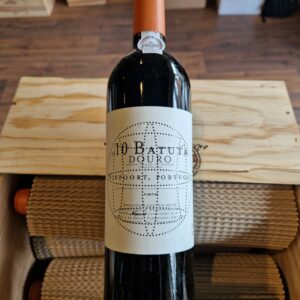 Niepoort is a family business dating back to 1842. Its winemaking tradition began in the Douro region, with the roduction of Port wine. Nowadays has a foothold in all the major Portuguese regions with still wines production outside the Douro Valley. Know-how, enthusiasm and an innovative mindset have passed down from generation to generation, making Niepoort one of the most authentic and notable Portuguese wine producers. The grapes to produce this wine come from Quinta do Carril, from a north-facing vineyard with more than 70 years, and also from old vineyards about 100 years old near Quinta de Nápoles. Niepoort sums up this elegant bottling well by saying “Batuta is a wine of extremes, having more of everything, is at the same time, the one with a more discrete behavior.” Quite so this year (and most), as the wine opens with subtlety and elegance, seeming rather mute. It is somewhat tinged by oak early in its life. That will be easily absorbed. It takes some air and patience to see what this sometimes too subtle wine has, but there is good structure underneath (and a little tannic pop that emerges with air) that should allow the wine to develop well and have the time to acquire some complexity, which is often its best feature. It has a very Burgundian feel, with a silky, graceful mid-palate. There is nothing obvious about this bottling in any year. This year, certainly, it is a Batuta that is perhaps subtle to a fault, but it will be a perfect food wine and when you are drinking it you will suddenly realize how much you like it.'' Time will tell, definitely one of the great current masters of winemaking. Not just in Portugal but in the world
Niepoort is a family business dating back to 1842. Its winemaking tradition began in the Douro region, with the roduction of Port wine. Nowadays has a foothold in all the major Portuguese regions with still wines production outside the Douro Valley. Know-how, enthusiasm and an innovative mindset have passed down from generation to generation, making Niepoort one of the most authentic and notable Portuguese wine producers. The grapes to produce this wine come from Quinta do Carril, from a north-facing vineyard with more than 70 years, and also from old vineyards about 100 years old near Quinta de Nápoles. Niepoort sums up this elegant bottling well by saying “Batuta is a wine of extremes, having more of everything, is at the same time, the one with a more discrete behavior.” Quite so this year (and most), as the wine opens with subtlety and elegance, seeming rather mute. It is somewhat tinged by oak early in its life. That will be easily absorbed. It takes some air and patience to see what this sometimes too subtle wine has, but there is good structure underneath (and a little tannic pop that emerges with air) that should allow the wine to develop well and have the time to acquire some complexity, which is often its best feature. It has a very Burgundian feel, with a silky, graceful mid-palate. There is nothing obvious about this bottling in any year. This year, certainly, it is a Batuta that is perhaps subtle to a fault, but it will be a perfect food wine and when you are drinking it you will suddenly realize how much you like it.'' Time will tell, definitely one of the great current masters of winemaking. Not just in Portugal but in the world -
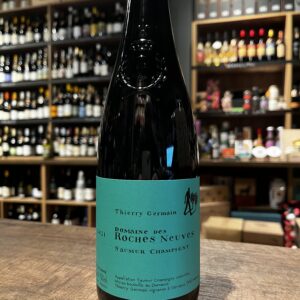 The 50-hectare Domaine des Roches Neuves is run by Bordelais Thierry Germain who originally was from Bordeaux and is situated in the appellation of Saumur-Champigny. The winery has existed since 1850, and since purchasing the estate in 1991, Thierry run it with such incredible will and tenacity that turned Domaine des Roches Neuves into one of the finest wineries/farms in France. Not to forget it wasn't without the help of his mentor and spiritual father Charly Foucault of Clos Rougeard The estate is run strictly along biodynamic lines, harvesting is manual and yields are low. This stunning wine pairs well with pork rillettes, lamb shank confit, grilled artichokes. Try it with just cheeses and charcuterie
The 50-hectare Domaine des Roches Neuves is run by Bordelais Thierry Germain who originally was from Bordeaux and is situated in the appellation of Saumur-Champigny. The winery has existed since 1850, and since purchasing the estate in 1991, Thierry run it with such incredible will and tenacity that turned Domaine des Roches Neuves into one of the finest wineries/farms in France. Not to forget it wasn't without the help of his mentor and spiritual father Charly Foucault of Clos Rougeard The estate is run strictly along biodynamic lines, harvesting is manual and yields are low. This stunning wine pairs well with pork rillettes, lamb shank confit, grilled artichokes. Try it with just cheeses and charcuterie -
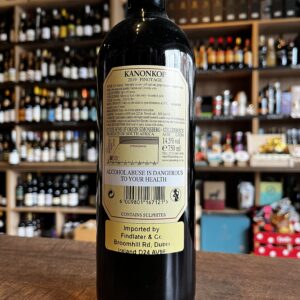
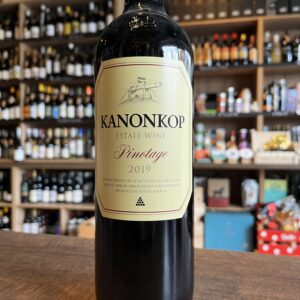 The name Kanonkop is derived from a hillock (kop) on the Simonsberg mountain above the wine estate from where, during the 17th and 18th centuries, a cannon (kanon) was fired to announce the arrival of sailing ships entering Table Bay. The roar of the cannon would be the signal to local farmers, who were waiting to make the 50-kilometer journey to the harbour, to load up their wagons with fresh fruit and vegetables to barter their produce. The first wines bearing the Kanonkop label were produced in 1973. To wine lovers familiar with the centuries old châteaux and domaines of Bordeaux and Burgundy respectively, the winemaking history of our estate may seem surprisingly young. For 1973 was the year in which Kanonkop’s contention for a place in the annals of South African wine greatness began, just three years before the death of the man to whom the wine estate owes everything it has achieved and all the recognition it has attained: Paul Sauer.
The name Kanonkop is derived from a hillock (kop) on the Simonsberg mountain above the wine estate from where, during the 17th and 18th centuries, a cannon (kanon) was fired to announce the arrival of sailing ships entering Table Bay. The roar of the cannon would be the signal to local farmers, who were waiting to make the 50-kilometer journey to the harbour, to load up their wagons with fresh fruit and vegetables to barter their produce. The first wines bearing the Kanonkop label were produced in 1973. To wine lovers familiar with the centuries old châteaux and domaines of Bordeaux and Burgundy respectively, the winemaking history of our estate may seem surprisingly young. For 1973 was the year in which Kanonkop’s contention for a place in the annals of South African wine greatness began, just three years before the death of the man to whom the wine estate owes everything it has achieved and all the recognition it has attained: Paul Sauer. -
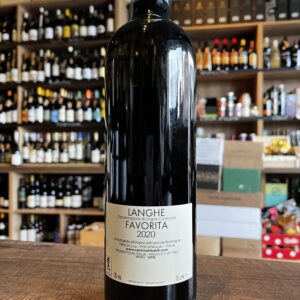
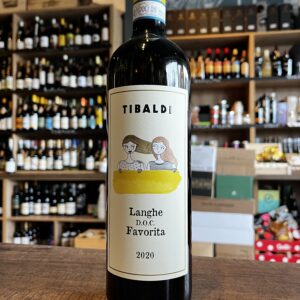 Normally I look for the inside story and drop it here. I reckon in this case its so personal that I let them tell their story... ''We are Monica and Daniela, two sisters born and raised breathing love for the winegrowing in the Roeroa colourful land, rich in biodiversity that fills us with new stimuli every day. We have inherited a passion for vines and grapes, by our father Stefano and grandfather Tunin, and so we decided to start winemaking and bet on Pocapaglia. We manage the entire wine production process: from the vineyard, where our father's help is still fundamental, to the cellar, without neglecting marketing. We both believe in commitment and tenacity, two essential ingredients to achieve the desired quality. Together we have fun, for us it is not just an occupation but it is a life choice that sees us immersed in our passion eight days a week!'' Life can be so simple and yet produce amazing and complex things... If you like Vermentino you will like this as it is its clone Pair it with someone you love
Normally I look for the inside story and drop it here. I reckon in this case its so personal that I let them tell their story... ''We are Monica and Daniela, two sisters born and raised breathing love for the winegrowing in the Roeroa colourful land, rich in biodiversity that fills us with new stimuli every day. We have inherited a passion for vines and grapes, by our father Stefano and grandfather Tunin, and so we decided to start winemaking and bet on Pocapaglia. We manage the entire wine production process: from the vineyard, where our father's help is still fundamental, to the cellar, without neglecting marketing. We both believe in commitment and tenacity, two essential ingredients to achieve the desired quality. Together we have fun, for us it is not just an occupation but it is a life choice that sees us immersed in our passion eight days a week!'' Life can be so simple and yet produce amazing and complex things... If you like Vermentino you will like this as it is its clone Pair it with someone you love


